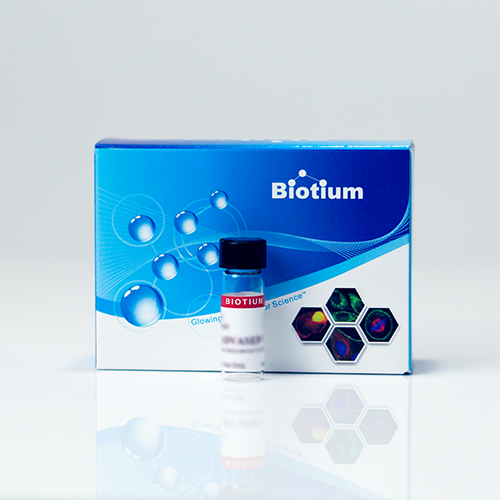DPX
DPX is a positively charged quencher that is often used with ANTS (90010) to study membrane fusion or permeability.
Wishlist updated! View wishlist
Product Description
DPX is a positively charged quencher that is often used with ANTS (90010) to study membrane fusion or permeability.
- Off-white solid soluble in water
- Store desiccated at 4°C
- C18H18Br2N2
- MW: 422
- [14208-10-7]
You may also like…
DPA/Terbium for Membrane Fusion Assay
The principle of DPA/Tb3 for vesicle fusion assay is based on the fact that contact of the chelator dipicolinic acid (DPA) with terbium (III) forms an instant Tb3 -DPA complex that is ~10,000 times more fluorescent than free Tb3 . In the assay, separate vesicle populations are loaded with 2.5 mM TbCl3 in 50 mM sodium citrate, or 50 mM DPA in 20 mM NaCl.
SDIP/Europium for Membrane Fusion Assay
Biotium developed SDIP/Eu3 as an alternative to DPA/Tb3 (80104), which is used for vesicle fusion assays.
CellBrite® Cytoplasmic Membrane Dyes
Dye solutions of lipophilic carbocyanine dyes DiB, Neuro-DiO, DiI, and DiD for non-toxic labeling of cytoplasmic membranes.
Nerve Terminal Staining Kits
Nerve Terminal Staining Kits contain Biotium's nerve terminal dyes and accessories for washing away or quenching extracellular dye fluorescence.
DiOC5(3)
DiOC5(3) and DiOC6(3) are two of the most widely used carbocyanine dyes used for membrane potential measurements.
ANTS
ANTS (8-aminonaphthalene-1,3,6-trisulfonic acid, disodium salt) is a highly negatively charged dye with an amino group that can be coupled to an aldehyde or ketone group to form an unstable Schiff base. The Schiff base is usually chemically reduced by sodium borohydride (NaBH4) or sodium cyanoborohydride (NaB(CN)H3) to form a stable linkage (1).


